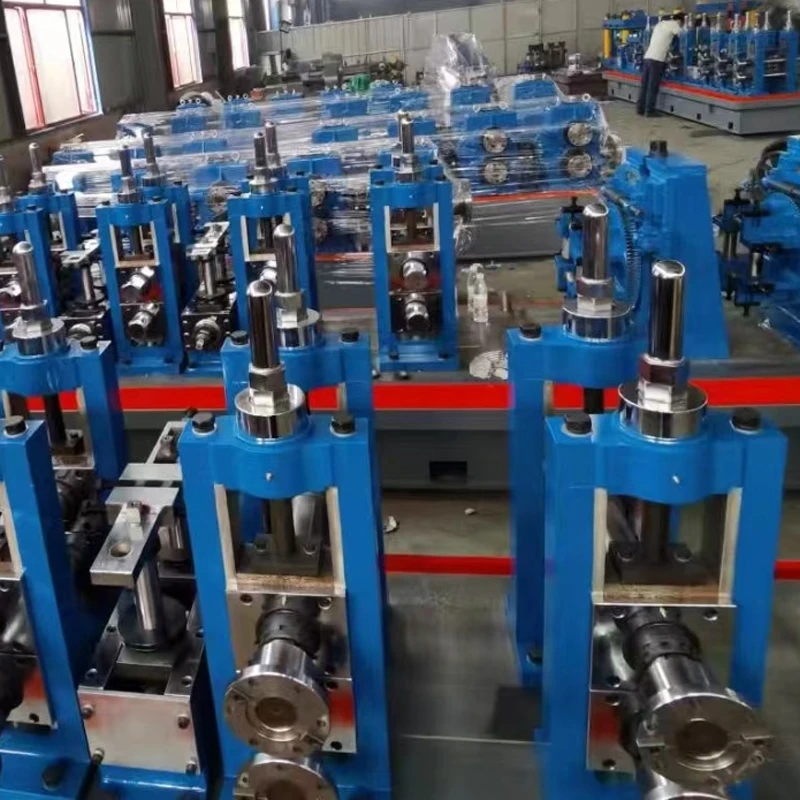Profile Roll Forming Equipment for Efficient Metal Fabrication Solutions
Understanding Profile Roll Forming Machines
Profile roll forming machines are essential tools in the manufacturing industry, particularly for fabricating metal components with specific cross-sectional profiles. These machines utilize a continuous deformation process to shape materials, typically steel or aluminum, into desired shapes with high precision and efficiency. This article delves into the various aspects of profile roll forming machines, exploring their design, working principles, applications, advantages, and considerations for selection.
What is Profile Roll Forming?
Profile roll forming is a cold working process that involves passing a metal strip or sheet through a series of rollers. Each roller progressively shapes the material at room temperature, creating a uniform and accurate profile. This process can create a vast range of complex shapes, including C-sections, Z-sections, and custom profiles tailored to specific applications.
Design and Components
A profile roll forming machine comprises several key components
1. Feed Mechanism This device ensures that the metal strip is fed accurately into the rollers at a predetermined speed. 2. Roller Assembly The core of the machine, the roller assembly consists of multiple rollers arranged in sequence. Each roller is uniquely designed to impart specific bends and curves to the workpiece.
3. Cutting Unit After the desired profile has been formed, the cutting unit trims the length of the metal profile to meet the specifications.
4. Control System Modern machines incorporate advanced control systems that facilitate automation and precise adjustments to speed, temperature, and pressure during the forming process.
5. Support Stands These provide stability to the machine and support the weight of the metal strips being processed.
Working Principle
The operation of a profile roll forming machine begins with the feeding of a metal strip into the machine. As the strip enters, it is guided through a series of rollers arranged in a specific sequence. Each roller is meticulously designed to bend the material gradually, ensuring that the final product adheres to the desired specifications. The material maintains its structural integrity because the process is done cold, preventing any changes in the metal's properties.
The automation in modern machines allows for a continuous rolling operation, enabling high production rates. Sensors and PLCs (Programmable Logic Controllers) monitor the process, ensuring quality control throughout the operation.
Applications
Profile roll forming machines are widely used across various industries due to their versatility. Common applications include
- Construction Manufacturing building materials such as roof panels, wall sections, and gutters. - Automotive Producing components like frames and brackets that require high strength and lightweight properties.
profile roll forming machine

- Electronics Fabricating shell casings, heat sinks, and support structures that require precise dimensions.
- Furniture Creating metal frames and supports that form the basis of various furniture designs.
Advantages of Roll Forming
Profile roll forming offers numerous advantages over other manufacturing methods, including
- High Efficiency Once set up, the machine can produce large quantities of components continuously, significantly reducing lead times.
- Material Utilization Minimal scrap is generated during the process, leading to more cost-effective production.
- Precision and Consistency The design of the rollers allows for high precision in shaping, resulting in consistent quality across batches.
- Flexibility Manufacturers can easily adapt the machine to create custom profiles without the need for major retooling.
Considerations for Selection
When choosing a profile roll forming machine, several factors should be considered
- Material Compatibility Ensure the machine can handle the specific types of materials you plan to use.
- Profile Complexity Consider the complexity of shapes you need to produce and whether the machine can accommodate them.
- Production Volume Evaluate your expected production volume to determine the machine’s capability and speed requirements.
- Budget Analyze initial costs versus long-term savings due to efficiency and reduced waste.
Conclusion
Profile roll forming machines play a pivotal role in modern manufacturing by offering efficiency, precision, and versatility in producing metal profiles. By understanding their components, working principles, and applications, manufacturers can leverage these machines to enhance production capacity and meet the specific demands of various industries. As technology advances, the capabilities of profile roll forming machines continue to expand, paving the way for even more innovative applications.
-
High Frequency Straight Seam Welded Pipe Production Line-BzZhou Xinghua Machinery Equipment Manufacturing Co., LTD.|Precision Welding, High EfficiencyNewsJul.30,2025
-
High Frequency Straight Seam Welded Pipe Production Line|BzZhou Xinghua|Precision Welding&EfficiencyNewsJul.30,2025
-
High Frequency Straight Seam Welded Pipe Production Line - BzZhou Xinghua|Precision Engineering&EfficiencyNewsJul.30,2025
-
High-Frequency Straight Seam Welded Pipe Production Line-BzZhou Xinghua Machinery Equipment Manufacturing Co., LTD.NewsJul.30,2025
-
High-Frequency Straight Seam Welded Pipe Production Line-BzZhou Xinghua Machinery Equipment Manufacturing Co., LTD.|Precision Manufacturing, High EfficiencyNewsJul.30,2025
-
High Frequency Straight Seam Welded Pipe Production Line-BzZhou Xinghua Machinery Equipment Manufacturing Co., LTD.|Precision Steel Pipe Manufacturing&Industrial EfficiencyNewsJul.29,2025


